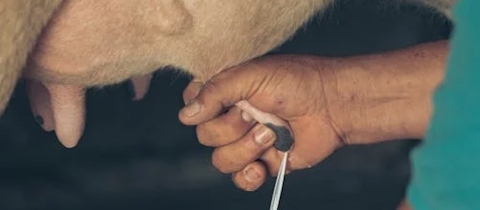The Vaccine Adverse Event Reporting System or VAERS is being misused by anti-vaxxers to terrify the public. It’s a shame because VAERS plays a vital role in detecting important but rare reactions caused by vaccines. The weaponization of VAERS by anti-vaccine activists serves as a reminder that having access to more information does not always lead to better decisions. Information needs to be correctly interpreted to guide us in the right direction.
Nearly sued out of existence
VAERS is a reporting system based in the United States and it arose, like so many other regulatory measures surrounding vaccines, as a response to a major problem. It may be hard to imagine now but there was a time in American history when vaccines and other biological products used for medical reasons were not regulated. However, when 13 children died from receiving a diphtheria antitoxin that was contaminated with tetanus, legal steps were taken to provide oversight, with the adoption by Congress in 1902 of the virus-toxin act. Subsequent tragedies over the decades led to a number of improvements, among them stricter requirements on safety and efficacy when applying for a vaccine license and the authority given to the federal government to inspect facilities where vaccines were being manufactured.
But it was a different kind of problem that caused the creation of VAERS. As Seth Mnookin reported in his book, The Panic Virus, a legal quagmire revealed itself in the 1970s. As claims were filed by individuals contending they had been harmed by a vaccine, it was unclear what people’s rights and obligations were. Could drug manufacturers be sued? Were governments liable? What about the pediatrician who had vaccinated the child?
Additionally, vaccine injury claims did not need to be scientifically valid to scare vaccine manufacturers. Imagine you are selling a product that does not make you much money but that enough people think is injuring them to the point where you get sued for it. If you have better sources of income, you may reach a point where you decide selling this product is no longer worth it from a financial standpoint. Indeed, the number of vaccine companies willing to distribute vaccines in the litigious United States started to tumble, and in 1986 Americans were left with a single supplier of the vaccine against diphtheria, pertussis and tetanus. Faced with the possibility of simply running out of the vaccine, Congress passed the National Childhood Vaccine Injury Act (NCVIA). In a nutshell, NCVIA would simplify the whole process and help ensure life-saving vaccines would continue to get distributed in the United States. A surtax would be collected on vaccine doses, which would go to help compensate people judged more likely than not to have been injured by a vaccine through a new vaccine court that would exist outside the traditional legal system.
And to be even more thorough and transparent in monitoring vaccine safety, the new law also established VAERS, a central database that continues to be in use to this day. What is being reported in VAERS is known as a vaccine adverse event: it is any unfavourable or unintended sign, any abnormal laboratory finding (like a blood test), any symptom or disease (even death) that comes after receiving a vaccine and that could, potentially, have been caused by it. These adverse event reports are registered with this central database that is managed by a private contractor under the direction of the Food and Drug Administration (FDA) and the Centers for Disease Control (CDC).
Especially when it comes to new vaccines or older vaccines that have now been approved for a new use, VAERS is a valuable early warning system for many reasons. It has the ability to detect previously unrecognized reactions to a vaccine and to spot unusual increases in a particular reaction. Vaccines are fantastic public health interventions because their benefits so often outweigh their risks by a large margin, but the outcome of this risk-benefit analysis can change over time, and VAERS and other reporting systems help with these calculations. For example, when a very rare type of blood clots was quickly found to be associated with AstraZeneca’s COVID-19 vaccine, the risk-benefit calculation changed in many countries by taking into consideration the availability of other vaccines which did not carry this very small risk. Reports submitted to VAERS are reviewed by experts, like doctors, pharmacists and statisticians, and serious events are given additional scrutiny. It was VAERS that initially detected a dangerous intestinal obstruction linked to RotaShield, a rotavirus vaccine that was subsequently withdrawn from the market by its manufacturer.
VAERS can also be used to see which preexisting health conditions may be associated with certain types of reactions, and this can lead to contraindications, as in the case of allergic reactions. The reporting system can also notice vaccine lots associated with an unusually high number of reported events (which might mean a rare case of a vaccine lot being contaminated) and it can identify specific locations in the United States where events are clustering. And it provides that country with transparent, country-wide statistics on vaccine-related adverse events. From 2011 to 2014, it collected an average of 30,000 reports each year on vaccine adverse events, with roughly one in every fourteen reports classified as “serious.”
This last statistic will appear quite scary. Am I saying that every year 2,100 people are seriously injured by a vaccine? No, and that is where we start to see VAERS’ important limitations, which are easily exploited by those looking to scare the vaccine-hesitant.
Where is the denominator? Where is the control group?
If I told you that a new vaccine triggered fifteen cases of allergic reactions, would you immediately demand the vaccine be taken off the market? I hope not. Hopefully, you would ask yourself an important question first: compared to what? Fifteen cases is the numerator of a fraction. What is the denominator? Fifteen cases out of how many that received the vaccine? Fifteen out of fifteen? That’s shocking! Fifteen out of a million? Hardly the same.
This is an important limitation of VAERS. It cannot be used, on its own, to figure out if an event following vaccination is common or rare. For example, when vaccines against the SARS-CoV-2 coronavirus started to be used in the population at large, more and more reports of adverse events began to be submitted to VAERS. This should not come as a shock. Obviously, the more a vaccine is used, the more adverse events are likely to be reported. If a vaccine requires two doses instead of one, that’s twice as many opportunities for an undesired event to take place after a shot.
Moreover, if the background rate of the event being reported, meaning how common this event is in the population, goes up, it’s likely that its frequency in VAERS will also go up. If the diagnostic criteria for a condition are expanded, more people will receive the diagnosis, which will make it look like its incidence has suddenly increased. This is what happened with autism over the years, and since the diagnosis for autism is usually made around the time a child receives a number of vaccines, it’s easy to witness more reports of autism being filed following vaccination and to wrongly claim causation. VAERS can also be biased in an interesting way: mild events following a vaccine are less likely to get reported compared to more severe ones. Finally, there is also the fact that as an adverse event gets widely reported in the media, more people will pay attention to it, leading to an increase in reports to VAERS. This is known as stimulated reporting.
It is, of course, possible that a particular adverse event is actually an adverse reaction, meaning that it was indeed caused by the vaccine, but being able to correctly point your finger at the jab is more complicated than it looks. A team working at the CDC reported back in 1994, a few years after VAERS had been instated, that the reports submitted to its system usually contained less than a quarter of the information necessary to make an expert assessment of what caused this adverse event. The information submitted can also be inaccurate: indeed, anyone, including non-healthcare professionals, can submit a report to VAERS. This can be seen as both a strength, for casting a wider net, and a weakness, for allowing unverified information to be filed.
It has by now been said a thousand times, but it bears repeating a thousand more: correlation does not necessarily imply causation. Just because an undesirable event happens after receiving a vaccine does not automatically imply that the vaccine is responsible. The experts who keep track of the adverse events reported to VAERS have to contextualize the numbers they see and look for clues. Are they seeing reports of a highly specific set of signs and symptoms—a syndrome—linked to a particular vaccine? The peculiar type of blood clot associated with low platelets that was tied to AstraZeneca’s COVID-19 vaccine is an example of a very specific event, and it makes the attribution of causation easier. (For a good summary of what this risk means to Canadians, see this article.)
Another indicator of causality is to compare how common the adverse event is in the vaccinated population to its frequency in an unvaccinated population. This is not a comparison that is directly available when consulting VAERS. Without this comparison, fear can easily take hold. For example, during the 2015 measles outbreak in the United States, a blogger looking at data from VAERS claimed that the vaccine against measles had directly killed over 100 people in the previous decade. When the evidence was looked at by experts, it turned out this was not true. Many of the filed reports of children who had died after receiving the measles vaccine were for children who had had a serious medical condition to begin with or who had died of sudden infant death syndrome. The most common causes of death in VAERS were consistent with the leading causes of death in the American population.
Scrolling through a VAERS data set does not allow us to conclude anything; VAERS can be used to generate hypotheses but not to test them directly.
It’s not how big your tool is, it’s how you use it
To show that VAERS listings should not be taken at face value to mean that the vaccine caused the reported event, I trawled through the database’s reports on the COVID-19 vaccines. There were many, many reports of fever and injection site reactions (to be expected), but there were also, shall we say, head-scratching reports. A woman reported a large bald spot on top of her head following vaccination. Someone simply wrote in, “Nosebleed.” I saw a report of “anal leakage.” More than one person complained of suddenly becoming impotent. Meanwhile, at the other end of the spectrum, the funniest report I saw stated, “My penis swelled to ten times its size.”
It is easy for an anti-vaccine activist—someone who is categorically opposed to vaccines and who sees themselves as a hero saving humanity from a costly mistake—to simply cherry-pick scary VAERS reports and present them as proof that a vaccine is known to cause serious harm and death, a tactic we could call “VAERS scare.” VAERS, when utilized in the right way by the right people, can be a fantastic early warning system to detect vaccine adverse reactions, especially those that were too rare to be detected in the clinical trials that preceded approval of the vaccine.
It is a tool and like any tool it can unfortunately be misused.
Note: in Canada, the way to report an adverse event following vaccination is to ask your doctor, nurse, or pharmacist to complete the Adverse Events Following Immunization form. Details can be found here.
Take-home message:
-VAERS is an American reporting system to keep track of unfavourable or unintended events that take place after vaccination, like a fever or a rash, and that may (or may not) have been caused by the vaccine
-Anti-vaxxers routinely publicize reports from VAERS as if they are proof that a vaccine is causing clear harm
-On its own, VAERS cannot be used to conclude anything, but it can tip off experts that a particular safety signal might be real and deserves to be further studied







